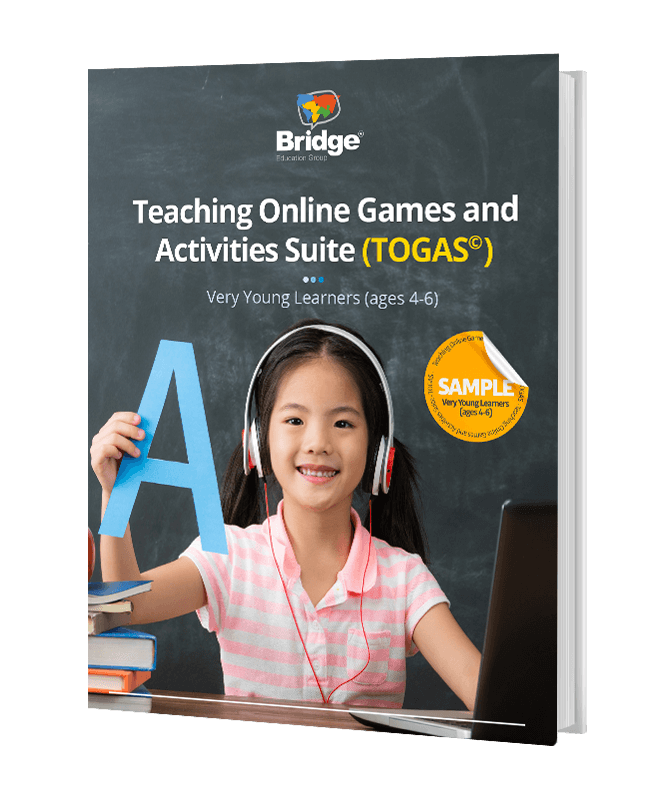Kids, children, and teens, collectively referred to as “young learners,” make up one of the most common student demographics within the TEFL/TESOL industry, and teaching this group, which is common in Asia, Europe, Latin America, and online, poses unique challenges and rewards for English teachers. As more countries worldwide prioritize English language learning, the demand for teachers who know how to teach English to kids continues to grow. This post will teach you everything you need to know about ESL for children and teens.
If you’re new to teaching, you’ll want to get initial training and qualification with a TEFL certificate. You can explore our online TEFL courses to get started!
Who is considered a young learner?
Technically, a young learner is considered any student under the age of 18, though some schools may even include young adults beyond 18 in this category.
Within this broad group, you will find smaller subgroups, including very young learners (pre-K and kindergarteners), children/young learners (usually referring to school-aged kids under 12), and teenagers (around 13 to 18). Like all learners, these subgroups each have their own distinct characteristics related to their stage of development.
Knowing how to teach English to these students can be a great boost to your professional TEFL/TESOL prospects.
Where will I teach English to kids?
Children and teenagers learning English can be found around the globe. In some regions, it’s common for foreign TEFL/TESOL teachers to either teach or assistant-teach in a K-12 setting (either in public or private schools), while in other regions, teachers work with students after school and on weekends at language centers or virtually.
Regardless of the classroom setting, these are the regions where it’s most common to teach kids.
Teaching kids in Europe
One region where it’s popular to teach kids is Europe. Standard teaching positions exist at language institutes working with a wide range of ages.
Another popular type of opportunity in Europe is working with kids at English summer camps. These camps are short-term and 100% English-focused, making the experience fun and immersive.
Many European countries also have government programs, such as France’s TAPIF program, that allow you to teach in public schools on a renewable annual contract. Some may even help you find housing or offer options to live with local families while you work.
Qualify for more jobs and advance your skills with
Specialized Certification in Teaching Young Learners & Teens
Get CertifiedTeaching kids in Asia
Another region where it’s extremely common to teach kids is Asia. Asian countries have put an increasing emphasis on English language instruction in recent years, leading to a large number of TEFL/TESOL jobs.
Within the public school systems, the EPIK teacher recruitment program in South Korea and the JET program in Japan are examples of this push.
Teaching kids in Latin America
Teaching kids English in Latin America is both popular and in high demand, as many countries in the region recognize the importance of English proficiency for global engagement and economic development. The establishment of various government-sponsored programs and teacher recruitment initiatives is proof of this recognition.
Public schools are a primary setting where English is often included in the curriculum, especially in countries with national programs aimed at improving language skills, such as Chile’s Programa Inglés Abre Puertas (English Opens Doors Program). Private language schools also play a role, offering after-school or weekend classes tailored to young learners.
In some countries, remote and online teaching programs are gaining traction, such as Uruguay’s Ceibal en Inglés project, which addresses teacher shortages by connecting remote English teachers to classrooms via technology. Non-profit and volunteer programs, such as those led by the Peace Corps and WorldTeach, deliver English instruction to underserved regions, broadening educational access for children in remote or low-income communities.
Interested in learning more about teaching English in South America? Read this next: Everything You Need to Know to Teach English in South America.
Teaching kids online
The market and salary
The online teaching market, in general, is another place where you’ll find plenty of opportunities to teach English to young learners, as this is what the majority of positions involve. This is a great option for those who love traveling and want to have a steady source of income while moving around frequently or for parents who prefer to work from home so they can stay with their kids.
On average, online companies pay anywhere from $9-$26 per hour and allow you to maintain a flexible schedule. All you need is a steady internet connection and some basic equipment and you can teach kids from anywhere in the world!
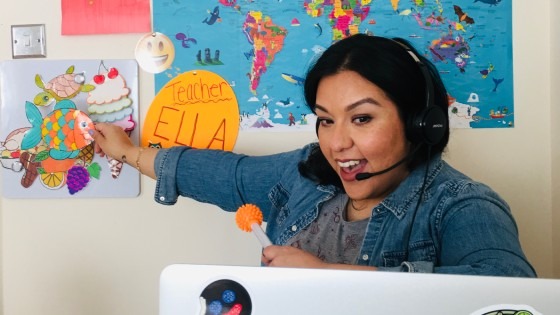
Teaching online vs. in the classroom
Teaching English online and teaching at a B&M (brick-and-mortar) school are quite different. Most online teaching jobs focus on either one-on-one tutoring or smaller virtual classrooms with around four students. B&M schools, on the other hand, will consist of larger classrooms with around 15-25 students on average.
Another difference is that while some online companies allow you to teach the same students repeatedly, others are set up so that your students are different each time, resulting in a very different type of student-teacher relationship than what you would experience teaching the same students at a B&M for an entire year.
Read more about teaching English online vs. in person.
Qualifying for online teaching jobs
There’s a lot of competition to teach online, but luckily the industry is growing every day. If you think teaching online is a good fit for you, consider earning a Specialized Certification in Teaching English Online to fully prepare yourself for these positions and stand out from other applicants.
Learn more about the requirements to teach English online.
What certificate do I need to teach kids?
Most of the TEFL/TESOL jobs around the globe and online will specifically require teachers to have at least 120 hours of general in-person or online TEFL certification. General courses, like the 120-hour Master Certificate, introduce TEFL/TESOL theory and methodology, along with English grammar, and may also include basic introductions to teaching specific groups, such as young learners and Business English students (another common demographic of TEFL/TESOL students).
However, do you need a special certificate to teach English to kids?
Teachers who wish to be more competitive when applying for jobs to teach kids, or who want to advance in their current teaching job, should consider taking their certification to the next level with a Specialized Certificate in Teaching English to Young Learners. Topics covered in this specialized course include how to properly prepare lesson plans, manage your classroom, and evaluate progress for classes in these age groups.
Trainees who add this kind of targeted training will also complete more total hours of TEFL certification, thus surpassing the minimum hours required to qualify for most jobs and becoming more attractive candidates!
How do I start teaching English for beginners?
You may be wondering how to teach English to children if they are total beginners and don’t speak any English. This can be an intimidating idea for new teachers! However, it’s important to note that for most jobs at language schools, TEFL/TESOL teachers are unlikely to be assigned to work with complete beginners if the teacher has limited knowledge of the local language.
Likewise, in K-12 classrooms of true beginner-level students, teachers who don’t speak the students’ first language (L1) typically work alongside a local teacher as an assistant. This can be a great way to learn from an experienced teacher and watch their tried-and-true techniques.
However, in some instances, such as when teaching in a classroom of students with multiple native languages or when teaching for a school that uses immersion learning, you may be assigned to beginners despite having no knowledge of their L1. Although that thought may seem scary at first, it’s actually easier than you think if you use appropriate teaching techniques such as TPR (total physical response), props, realia, photographs, and illustrations.
You’d be surprised how much you can get students to understand just by acting out what you’re saying and keeping phrases short and simple.
Get tips for teaching English online to beginners!
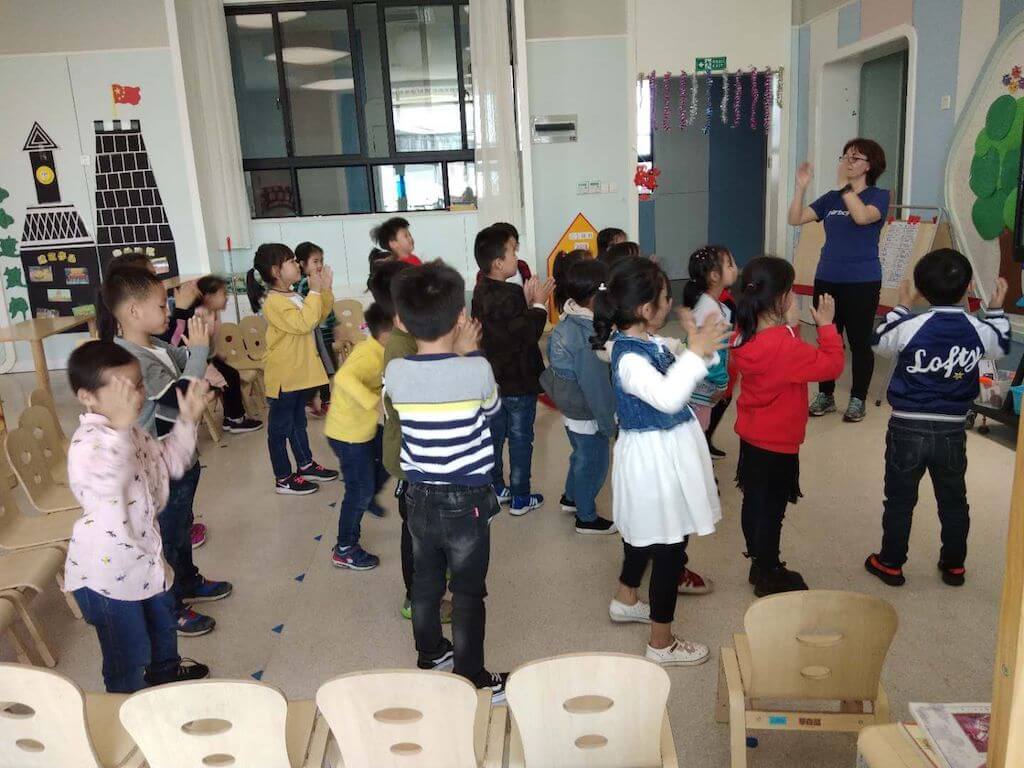
What are the basic techniques for teaching English to young learners?
Young learners present teachers with a number of unique opportunities for creativity and engagement in the classroom. Check out some popular techniques below.
Techniques for teaching English to children
Use a variety of fun activities
When working with younger children, it is best to incorporate games, songs, videos, props, and other fun and interactive elements into activities to keep the students moving and engaged. Children love to be active and included!
To hold student interest, be sure to build in a variety of activities that involve different skills and incorporate both quiet and noisy tasks so that students experience a balance of calm and energetic periods. Building lessons around themes can also help keep students attentive. It creates a sense of cohesion from one activity to the next and reinforces new material through varied learning techniques.
Kevin, who worked as an English teacher in Portugal, remembers organizing hands-on activities with the children he taught:
“I had my classes draw hand turkeys for American Thanksgiving and taught them simple holiday songs near Christmas time (like ‘Jingle Bells’ and ‘We Wish You a Merry Christmas’). This was a way to offer them a fun activity and also to teach them cultural lessons.”
Establish class routines
Another key technique for teaching children is maintaining predictable and structured classroom routines. When children know what to expect every day in class, and you make sure to avoid “downtime” – when students aren’t sure what they should be doing – this improves student confidence and creates a positive learning environment.
For example, having specific routines for common activities, like transitioning from one task to another or cleaning up, can help children stay focused and reduce disruptive behaviors. Over time, these routines make it easier for students to follow along and participate actively, making classroom management smoother and learning more enjoyable for everyone.
Use TPR (total physical response)
Total Physical Response (TPR) is a teaching technique that turns vocabulary learning into an engaging and dynamic activity by combining language with physical movement. Young learners stay engaged and retain information better when they actively participate. TPR not only helps students learn vocabulary and phrases faster but also allows them to expend energy productively, making it an ideal method for both physical and virtual classrooms.
To use TPR in class, teachers first say a word or phrase while demonstrating an action, encouraging students to mimic the movement. In a physical classroom, students can do this as a circle time activity where they can see each other and interact. Online, TPR is also highly effective. In one-on-one settings, teachers can switch roles and have the child lead with actions; in group sessions, students can use hand movements or gestures in response to phrases.
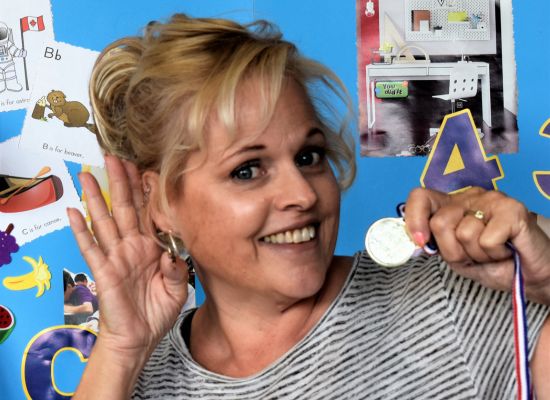
Use music and songs
Songs introduce rhythm, repetition, and rhyme, which are ideal for language acquisition, helping children absorb vocabulary, sentence structure, and pronunciation. Action songs, like “Head, Shoulders, Knees, and Toes,” allow kids to learn words through movement, reinforcing retention by linking language with physical activity.
Music also works well in both physical and virtual classrooms. Teachers can use songs to introduce new vocabulary, signal transitions, or even incorporate fun routines like dancing. In online classes, students can sing and do actions on camera, creating an interactive experience that boosts engagement. Using songs builds a positive association with English, encouraging children to learn through play.
Looking for ways to teach pronunciation? Read this next: ESL Pronunciation Games for Teaching Kids, Teens, and Adults.
Techniques for teaching teenagers
Teach English using context
Adolescents, meanwhile, can absorb lessons on more advanced elements of the language, like grammar and syntax. They will also have more developed conversational skills and be able to carry out more structured activities.
Teachers can have a course discussion on issues in the news or have their students write and act out a dialogue – these are great ways to teach English in context.
Try out these 11 fun TEFL/TESOL speaking activities!
Cater to a variety of learning styles
Remember that students have different learning styles, so aim for variety in the types of lessons and activities you do, so that you can facilitate all students’ learning.
Some students may thrive with visual aids, like videos or diagrams, while others may prefer hands-on activities or interactive discussions. For auditory learners, try incorporating music, podcasts, or spoken-word exercises, while kinesthetic learners will engage more with role-plays, movement-based activities, or real-world scenarios.
Creating a balance of individual, pair, and group work also helps address diverse preferences, as some teens feel more comfortable expressing themselves in smaller groups or one-on-one settings. Offering a range of activities not only keeps students interested but also allows each student to learn in ways that suit them best, ultimately fostering a more inclusive and engaging classroom environment.
Involve students in class planning
Another great way to engage students in learning is to involve them in creating the classroom environment.
Although you’re ultimately in charge, older students appreciate it when you let them help decide on classroom decorations or vote on which of two games to play in the next class. It gives them a sense of involvement and makes them invested in the outcome of the class.
Get more classroom management strategies for young learners.

Offer plenty of feedback
In addition to boosting student engagement, ensure that teens receive adequate and frequent feedback to avoid frustration later on. Have them be a part of the evaluation process by reflecting on their own progress through journal entries or comparing how they performed on a past test with a more recent one on the same material.
This ensures a clear line of communication between you and the student at all times and prevents complications from a lack of transparency when it comes time to hand out final grades or offer broader feedback.
Learn how to give feedback to ESL students.
What are some games for teaching English to kids?
ESL games for young learners
Four of the more common English teaching games for kids include:
Hangman
One student thinks of a word and draws short lines to signify spaces for each letter of the word on the physical or virtual whiteboard. Classmates have a limited number of chances to guess the letters in the word, and each time they guess incorrectly, an element of the “hanging man” is drawn (such as the head, body, arm, etc.).
When a student guesses a letter correctly, they write it in the appropriate space. The student who guesses the word becomes the winner. However, if students guess too many incorrect letters, completing the drawing of the man, the man is “hanged,” and the students lose.
For more ideas, take a Micro-credential course in Games and Activities for the Online Classroom.
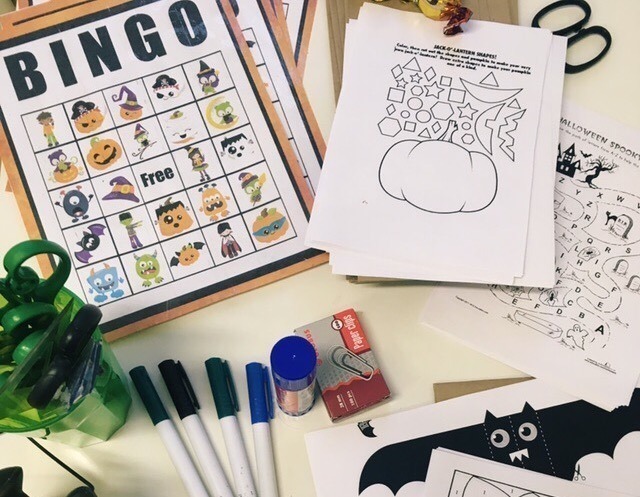
BINGO
Create BINGO cards and a call sheet (use an online BINGO sheet generator like this one). Either pass out the cards or send them to students electronically if playing online. Cut out the call sheet and put the squares into a box or bag.
If teaching in person, allow each student a turn to be the caller, who picks one square at a time from the box and calls out what is on the square. If teaching online, the teacher can be the caller. The other students listen to what is called and mark the corresponding image or word on their cards.
The first student to fill a complete line of squares on their card, either horizontally, diagonally, or vertically, calls out “BINGO!” and is the winner.
Teacher Says
A twist on the classic “Simon Says,” this game is perfect for practicing listening skills and vocabulary.
The teacher gives commands starting with “Teacher says” (e.g., “Teacher says touch your nose.”), and students follow along only if the command includes “Teacher says.”
If the teacher gives a command without “Teacher says,” students shouldn’t do the action. This game builds listening comprehension and vocabulary while keeping students engaged and active.
Vocabulary Relay Race
Divide students into two teams and give each team a set of vocabulary cards. Set up two stations with pictures or objects that correspond to the vocabulary words. Each student takes turns racing to match a word card to the correct picture or object, then runs back to tag the next teammate.
The team that matches all their vocabulary words first wins. This game encourages teamwork, reinforces vocabulary, and lets students release energy in a structured way.
Check out a full list of ESL games and activities for young learners.
Engage your students with this free eBook sample
Teaching Online Games and Activities – Very Young Learners
DownloadESL games for teenagers
Many useful games prompt students to use the English language actively and creatively. These activities work well for teenagers, who typically have a higher level of proficiency and more developed skills.
Some classic games include:
Would You Rather?
Pair your students up. Have them challenge each other to make a tough choice between two funny or thought-provoking scenarios. For example, a student might ask, “Would you rather find your soulmate or find a million dollars?” Then, they must explain why they chose the one they did.
If you’d like to involve the entire class in this activity or are teaching online without virtual breakout groups, ask students to write their own questions. Then, have them take turns asking their questions to classmates in front of the class.
For more ideas, check out these 13 easy ESL icebreakers.
Two Truths and a Lie
Ask students to come up with three statements about themselves, two of which are true and one of which is a lie.
Then, each student presents his or her three statements to the class and the other students must guess which one is the lie. Not only does this prompt students to use the language with each other but it helps them get to know their classmates!
Debate Club
Divide the class into two teams and assign a topic relevant to their interests such as “Should students have homework every day?” Give the teams time to brainstorm key points and examples and prepare arguments for or against the topic. Teams take turns presenting their arguments, and after both sides have shared, students can ask questions or challenge opposing views.
This game helps teenagers practice persuasive language, critical thinking, and speaking skills in a structured, interactive format.
Mystery Interviews
Assign each student a secret character or profession (e.g., a detective, a celebrity, a teacher) and have them prepare to answer questions as their character. Pair students up or divide them into small groups, and have one student act as the interviewer and another as the mystery guest.
The goal is for the interviewer to ask creative questions and guess the mystery guest’s identity based on their responses. This game is great for practicing question formation, conversational skills, and creative thinking.
Get more games and activities that include teaching demos like the one below when you enroll in the Specialized Certification in Teaching English to Young Learners and Teenagers course:
Are you ready to teach English to kids?
When preparing for a new TEFL/TESOL position, it is important to have an idea of how to best lesson plan and prepare for the specific types of students you’ll be teaching. With the right classroom management strategies and engaging activities, you’ll be ready to teach kids and teens abroad or online!







